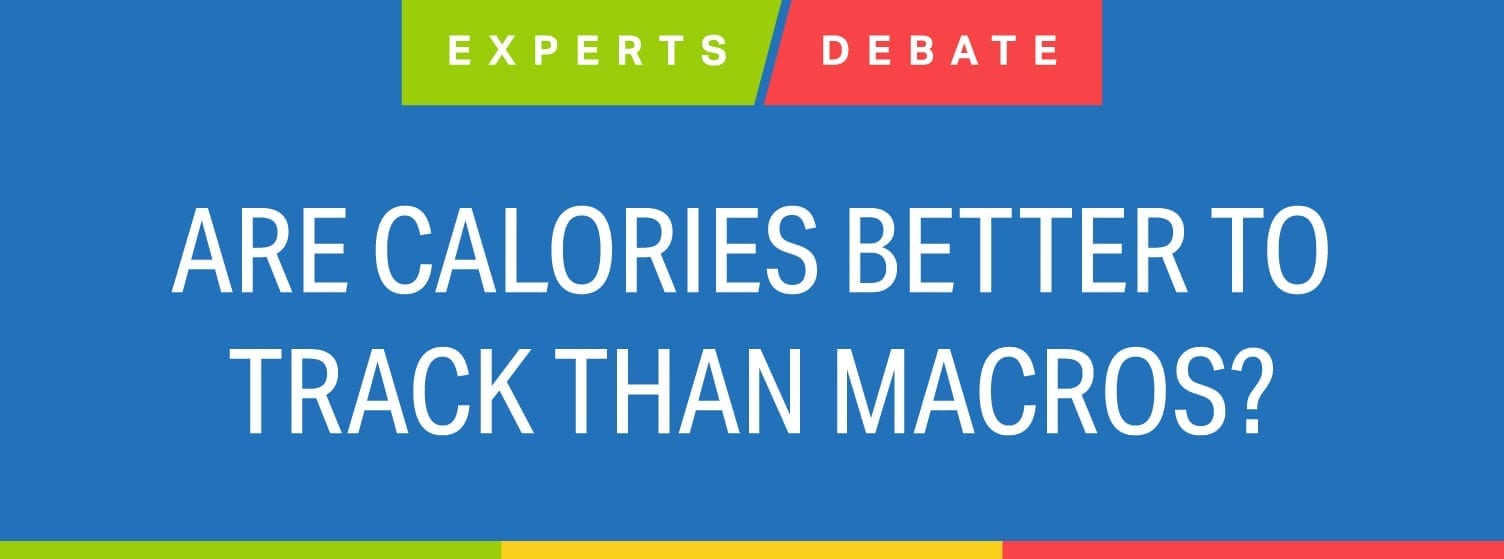If you’re trying to shed pounds, one of many tried-and-true weight-loss tactics is to track your daily intake with a food journal like MyFitnessPal to create a modest calorie deficit. When you eat and drink fewer calories than what you burn through day-to-day activities and exercise, you support weight loss.
However, you’ve likely also heard tracking macronutrients (aka macros), including protein, fat and carbs is also an essential part of the weight-loss equation. When you’re trying to slim down, protein and fat tell your body you’re full and slow digestion to quiet hunger pangs, while carbs provide energy to fuel workouts and fiber to help you feel full longer.
Experts weigh in on whether counting calories or macros is more effective for weight loss and share the best ways to log your intake for a successful weight-loss journey.

SHOULD YOU COUNT CALORIES OR MACROS TO LOSE WEIGHT?

For the average person trying to lose weight, it’s more important to learn how to count calories than to figure out your ideal macro intake. Most of us simply eat too much, and when you cut back, you’ll start dropping pounds.

To keep it simple, count calories since they’re clearly written on nutrition facts labels, and it’s just one unit to measure. Tracking macros is tedious to stick with, and it’s hard to determine the best macro ratio without the help of a registered dietitian.

Counting macros may be a more promising, healthier option for weight loss because it encourages you to focus on how your calories are distributed, which could lead you to eat more nutritious, balanced meals. With an app like MyFitnessPal, it takes the same amount of time as counting calories.

For sustainable weight loss, it’s better to focus on macros to learn how to eat well. While you could presumably lose weight eating fat and carbs as long as it still resulted in a calorie deficit, that would be unbalanced and result in future health issues.
THE CASE FOR COUNTING CALORIES

Some research suggests calorie-counting is the way to go for weight loss. Tracking calories can help you see how much you need to eat and what healthy portions look like for weight loss. Counting macros can be time-consuming and confusing to monitor three different nutrients, especially since most foods contain a combination.

Tracking calories ensures you’re eating fewer calories than you burn and allows you to easily make adjustments along the way to lose weight. While being in a calorie deficit long-term isn’t sustainable, shifting between weight-loss and weight-maintenance phases can give your body and mind a break so you can lose weight and keep it off.
THE CASE FOR COUNTING MACOS

There is no one-size-fits-all approach to weight loss. Since some people respond better to lower-carb or higher-fat diets, tracking macros is the best way to find out what works best for you.

If you’re not eating enough carbs, you may not have enough energy for exercise. Too little protein, and you could lose lean muscle tissue — another knock on your metabolism. For these reasons, the better route is to track macros for a diet that’s balanced, satisfying and sustainable.

Research shows decreasing calories has a limited short-term influence because it can impact your metabolism and the hormones that keep your appetite in check. Since your body may slow down your metabolism when you cut calories, it can be difficult to lose weight by tracking calories alone.
THE BOTTOM LINE
“When it comes to weight loss, the best approach is one that will fit your needs, lifestyle and preferences,” says Moskowitz. “While calorie-counting can make it slightly easier to eat all of the foods you enjoy, it’s still important to focus on balance and nutrient-density.”
Ultimately, experts agree there are benefits to counting calories and macros, but tracking them on your own can be complicated. That’s where an app like MyFitnessPal and a registered dietitian can help you master the basics of healthy eating so you can incorporate them into your day-to-day for long-term success.
A good place to start: “Count calories to learn portion sizes while focusing on making your meals 45–65% carbs, 10–35% protein and 20–35% fat, according to dietary guidelines for macronutrients,” suggests Kostro Miller. Remember, calorie-counting and macro-tracking are tools you can use, take a break from and revisit as needed to help you reach your goals.
Make progress every day while you work on mini nutrition goals, like learning to track macros. Go to “Plans” in the MyFitnessPal app for daily coaching and easy-to-follow tasks to keep you motivated.




